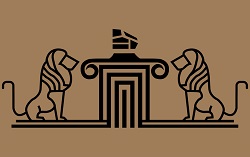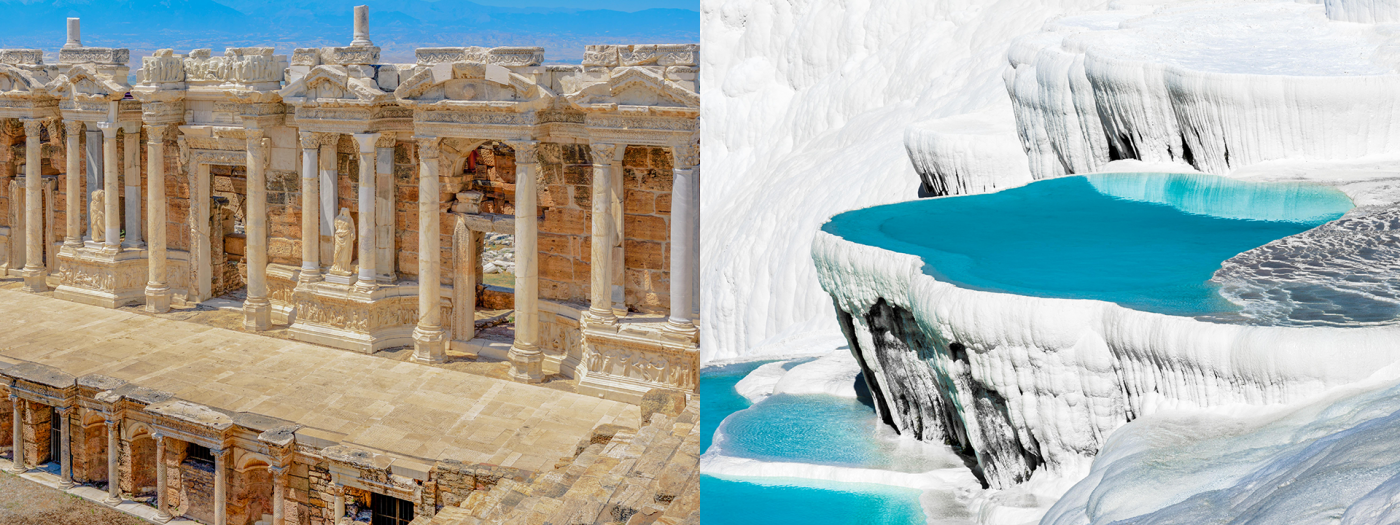Founded: 2nd century B.C.
Abandoned: 14th century A.D.
Location: Southwestern Anatolia
Periods: Roman Republican to High Medieval
Material: Marble, travertine, calcite alabaster, and polychromatic breccia
Hierapolis is the ancient Greek Holy City, surrounded by the unreal landscape of Pamukkale in southwestern Anatolia. It is referred to as Holy City in archaeological terms due to the abundance of religious buildings and temples discovered there. Situated about 20 km north of Denizli, the ancient city is said to be located near several historic areas including Laodicea and Tripolis which was in Kario’s Border. The name Hierapolis is given to the city because of its Mother goddess Cult.
Although the information about Hierapolis is still unclear, it is known in history that the city was founded in 190 BC by the king of Pergamum, Eumenes II. The name of the city was inspired by the Amazon’s Queen Hiera, the wife of Telephos, the founder of Pergamum.
However, Hierapolis was struck with an earthquake and was destroyed in 60 A.D. during the reign of the Roman Emperor Nero. Following this event, the city was reconstructed but unfortunately lost its Hellenistic Style and became a typical Roman City. It became a commercial and religious centre and gained importance due to its position. In the 12th century A.D., the Turks conquered Hierapolis. Eventually, it became a Christian city when a church was founded there through the guidance of Apostle Paul while he resided at Ephesus. This is mentioned in the New Testament, according to Colossian 4:13.
Some of the well-known ruins of this ancient Holy City include the South Byzantine Gate, Building with Triron Fountain, Ionic House, Latrina, Apollon Temple, Middle Age Fortress, City Walls, Theatre, St. Philip’s Martyrium, Churches and the Great Bath Complex.
The primary building materials that are used in the monuments are marble, travertine, calcite alabaster and polychromatic breccia. White, white-veined and grey marble has been used widely throughout the city. This can be seen in the walls of the Middle Age Fortress where blocks of marble were used that contained inscriptions. It is suspected that the inner walls of the Great Bath Complex were also covered with marble through the markings that the stone has left behind.
Similarly, many monumental structures present show signs or remains of marble and other building materials that were commonly used for construction at the time. These stones were widely available in the areas surrounding the city, where they were quarried in excessive quantities.



